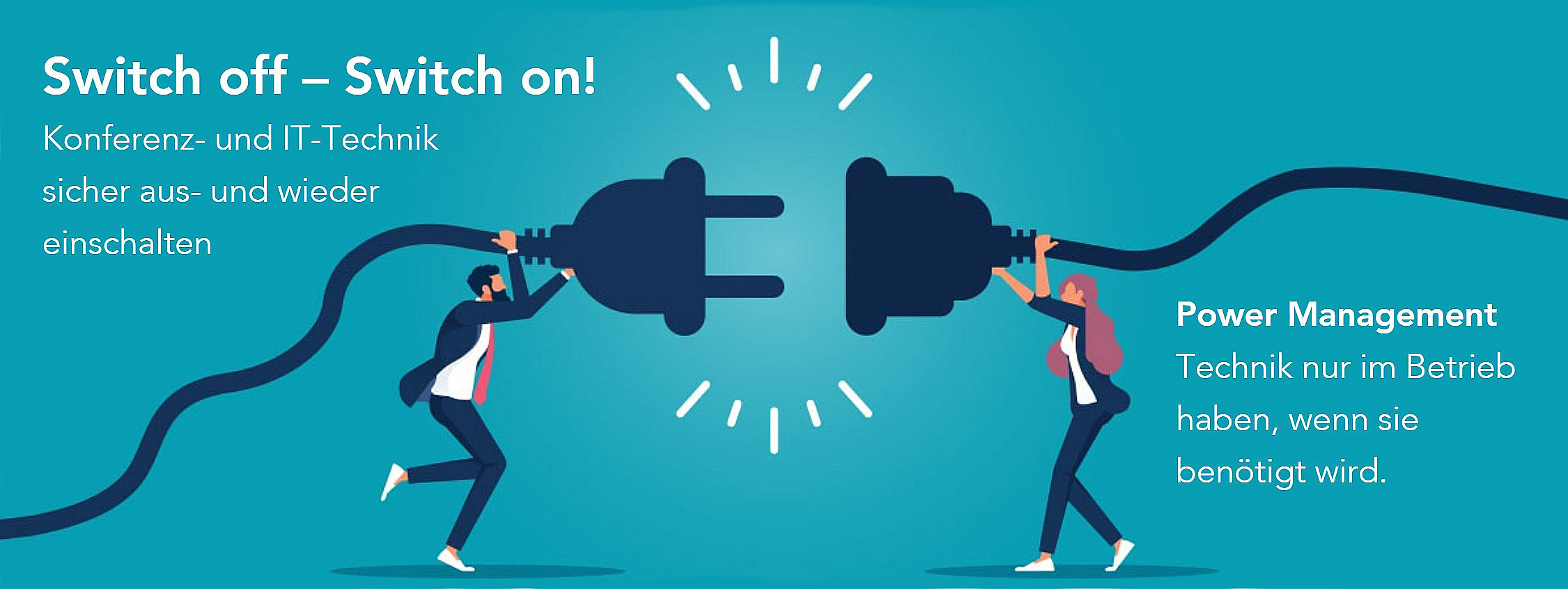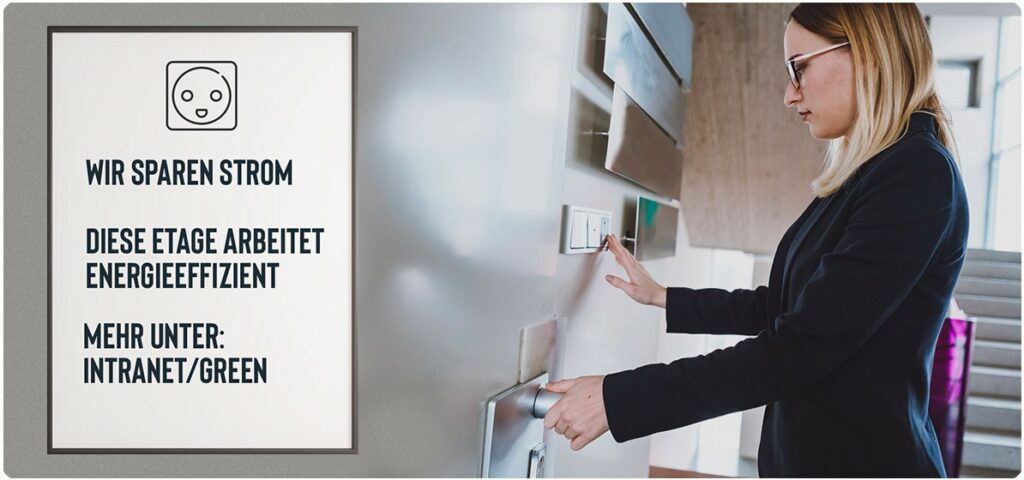Green AV in conference rooms, offices, event venues – Backgrounds

Challenge Green AV
It is common knowledge that devices consume electricity in standby mode. In private households, it is widespread to disconnect devices from the mains whenever possible when they are not in use.
In the professional environment, in many companies and industrial applications, many devices and systems remain connected to the mains not only in standby mode but also switched on completely. This rarely happens out of carelessness or thoughtlessness.
Do you know the inrush current?
The inrush current occurs immediately after an electrical load is switched on.
It can be many times higher than the current that actually flows through the device (rated current). For example, transformers in audio amplifiers and switching power supplies in PCs have high inrush currents, but so do classic incandescent lamps, which is why they tend to break when switched on. The filament burns in the inrush current.
Inrush current curve on a mains transformer with 230 volts and 60 watts – quite typical in conference technology.
The current pulses only decay over several mains voltage periods.
First the hen and then the chicken?
What actually has to be switched off and on again, is there a sequence, or does the operational readiness still have to be established by further activities?
Every power off and on is a risk in terms of smooth operation, and yes: many systems have a specific power on and off sequence. Some devices have processors, poll their interfaces and cable connections and need a certain time until they are operational, booted up. Some devices update software and are no longer in the required initial state after a reboot.
While it may have been a pragmatic solution in the past to simply leave the devices in continuous operation (not stand-by!), we believe it is no longer debatable to continue this practice.
The cost-saving factor has often not been enough to ensure that simple and safe switching off and on of even complex systems has been realized. The desire and necessity to handle energy responsibly today has prompted us and our manufacturers to come up with new, modern solutions.
Frequent switching on and off reduces the service life
Bad news: Yes. Every electromagnetic component heats up when switched on and cools down again when switched off. Mechanical stresses are created that can cause faults (such as damage to circuit boards).
Good news: No. This temperature damage is steadily decreasing and, rather than being the rule, is becoming the exception.
Sensor technology and new materials in electronics ensure not only ever smaller devices, but also more energy-efficient and durable – with corresponding high-quality and responsible production.
A simple temperature sensor and humidity sensor can ensure operation and long life and costs just under 10 EUR. Current prices at the supplier AZ-Delivery.

Sensor technology and new materials in electronics ensure not only ever smaller devices, but also more energy-efficient and durable – with corresponding high-quality and responsible production.
A simple temperature sensor and humidity sensor can ensure operation and long life and costs just under 10 EUR. Current prices at the supplier AZ-Delivery.
3. prolonging the life of electromagnetic devices is a reason for continuous operation.
The technique used
In the case of classic PC workstations, the difference in energy consumption is up to 50 percent for the same performance. Often, however, the classic PC workstations can be replaced by resource-saving server-client solutions (thin clients). Significant savings are already possible here with around 10 workstations.
4 Energy efficiency begins with procurement. Media and IT technology and their energy-efficient design.
The human factor
The last one turns off the light! That's easy at home, but more difficult at work. Am I allowed to turn off the audio system at all? Who has the authority? Does anyone still need it today?
5. responsibility issues, pragmatism and convenience are another significant reason for the continuous operation of electrical equipment in companies.
The human factor

The basis for Green IT and Green AV are the employees. They must be given all the information they need to save energy and be actively involved in saving energy. Also make energy saving an event, pay attention and reward the successes.
